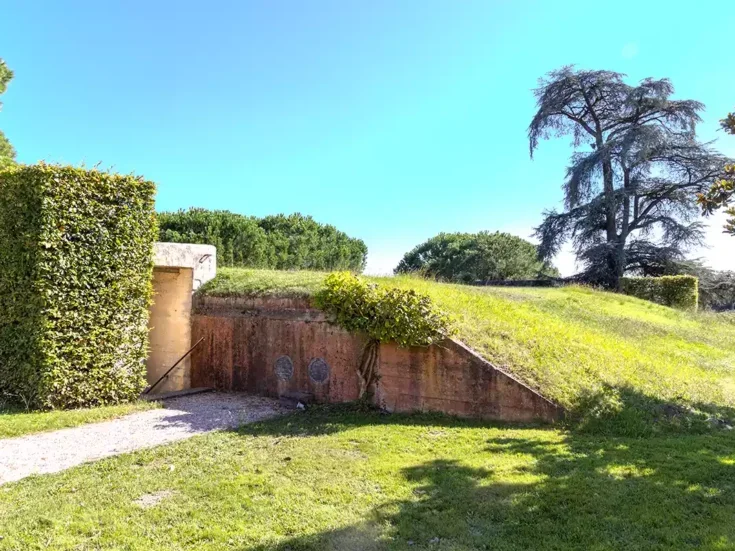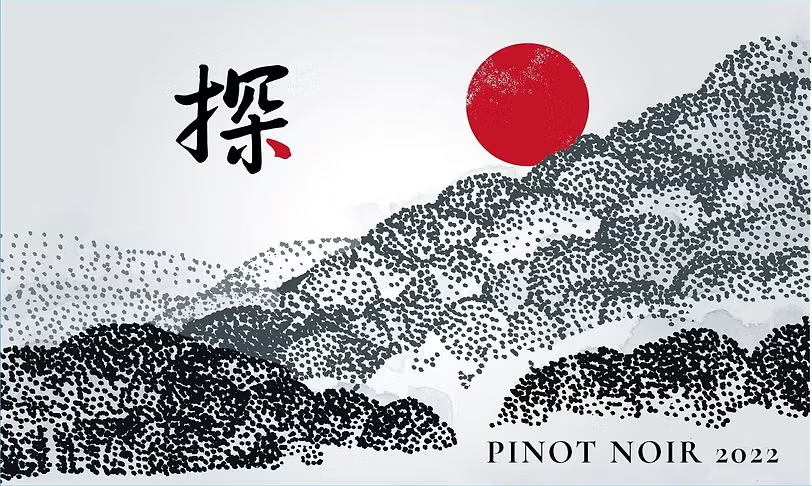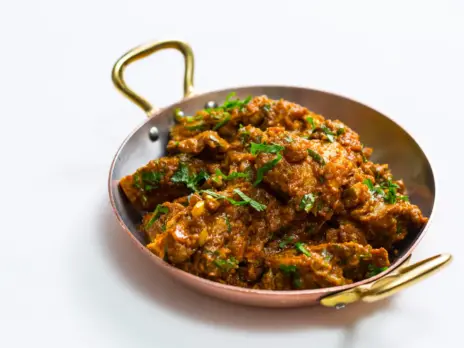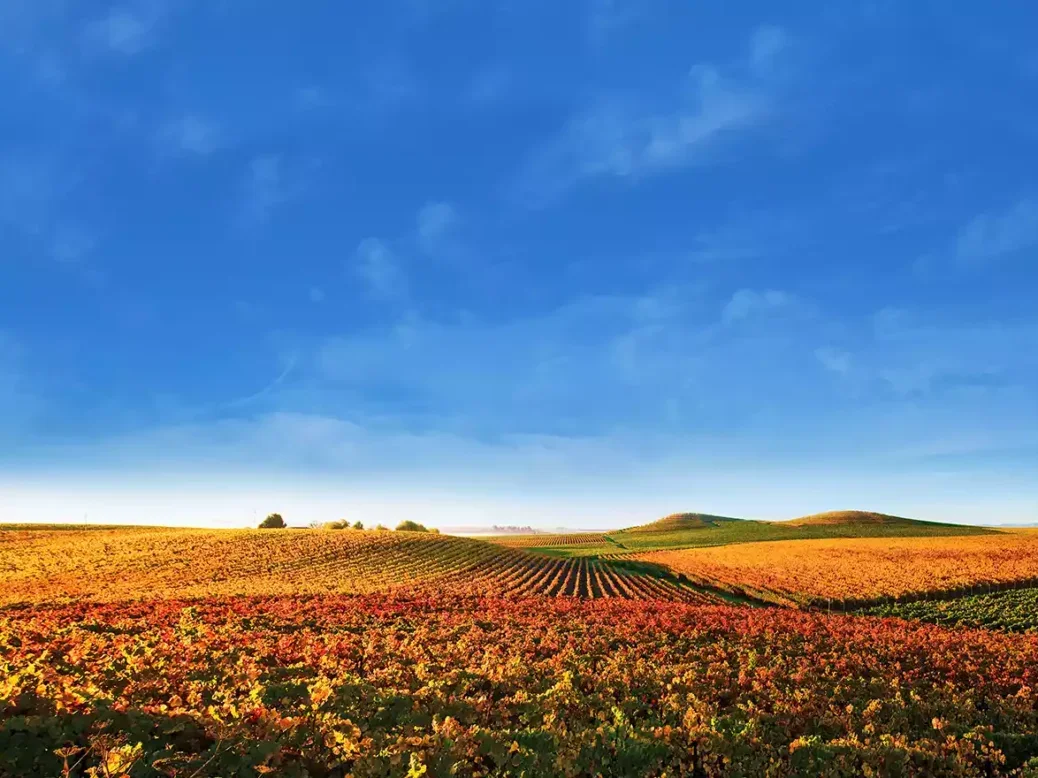
Over the past few decades, Napa Valley has built a world-class wine brand largely on the generic reputation of its Cabernet Sauvignons. Not all Napa Cabernets are created equal, however, and little has been done to educate the wine trade or consumers on distinctions in taste and quality among the valley’s “nested” sub-appellations. Roger Morris asks if the future growth and reputation of the Napa Valley brand depend on emphasizing these individual terroirs—even if it means overcoming deeply rooted fears of separation anxiety.
La Place de Bordeaux, the legendary French wine-marketing platform, has been rejuvenated in recent years by the influx of iconic wines from around the world. None of these new arrivals has raised more excitement than those from California, particularly the Cabernet Sauvignons and red blends from Napa Valley.
Seventeen of those Napa reds were listed among La Place’s annual 2024 fall releases, and in a subsequent posting, British critic Colin Hay rated two of them perfect 100s. The others scored a minimum of 96. But Napa Valley is a big little place—more than 122,000 acres (49,400ha)—yet neither La Place nor Hay provided much information on the wines’ subregions of origin.
A little research shows that all 17 came from grapes mostly grown in four different Napa sub-appellations or terroirs—Oakville, Rutherford, Coombsville, and Mount Veeder—as well as from one area still not recognized as an American Viticultural Area (AVA). For example, the Cabernets from Pym Rae, Opus One, Paul Hobbs, and Inglenook each came from different “nested appellations,” as Napa Valley Vintners likes to call them. But how many potential buyers or collectors from around the world could name which wine of them cracked their shells in what part of the nest? Since all are Cabernet Sauvignons from Napa Valley, does it really matter? If you believe in terroir, as most people in the wine trade profess to, it certainly should.
Of course, such ignoring of subregions would never happen in Europe, where the sub-appellations and crus within a larger region have always been of paramount importance. No one would think of spending $200 for a Burgundy Chardonnay without first knowing where in Burgundy the grapes originated—the Mâconnais or Montrachet? And aspiring European wineries have, for centuries, urged collectors to notice they are located “next door to” or “just down the slope from” Lafite or Ausone or Cheval Blanc or Hermitage, hoping to convince buyers that their terroirs are very similar, if not exactly the same, as the more famous property.
Napa Valley, however, has long been operating under the theory that the Napa Valley name is enough of a guarantee of quality, particularly for its red wines, that there is little need to delve further into their origins, whether they cost $30 a bottle or $300. While Napa Valley does have sub-appellations—as many as 16 of them and counting, each with its different terroir—how much do even people in the wine trade and rabid collectors know about them? And could a sub-appellation that doesn’t produce superior Cabernets but does grow world-class Sauvignon Blancs, for example, build a distinctive reputation outside the Napa Valley image of being only Cabernet?
It is difficult keeping any brand with a superior quality reputation fresh for almost 50 years without rethinking and reworking it, adding new ideas or new wrinkles. Has Napa Valley reached that point where its name may no longer be enough, and would aggressively promoting the exploration of its nested AVAs provide a needed brand refresh? For that to happen, those who run the mother ship will have to get over the fears of separation anxiety that, 35 years ago, caused it to build a legal hurdle that serves to keep the fledglings in their nests and not flying away.
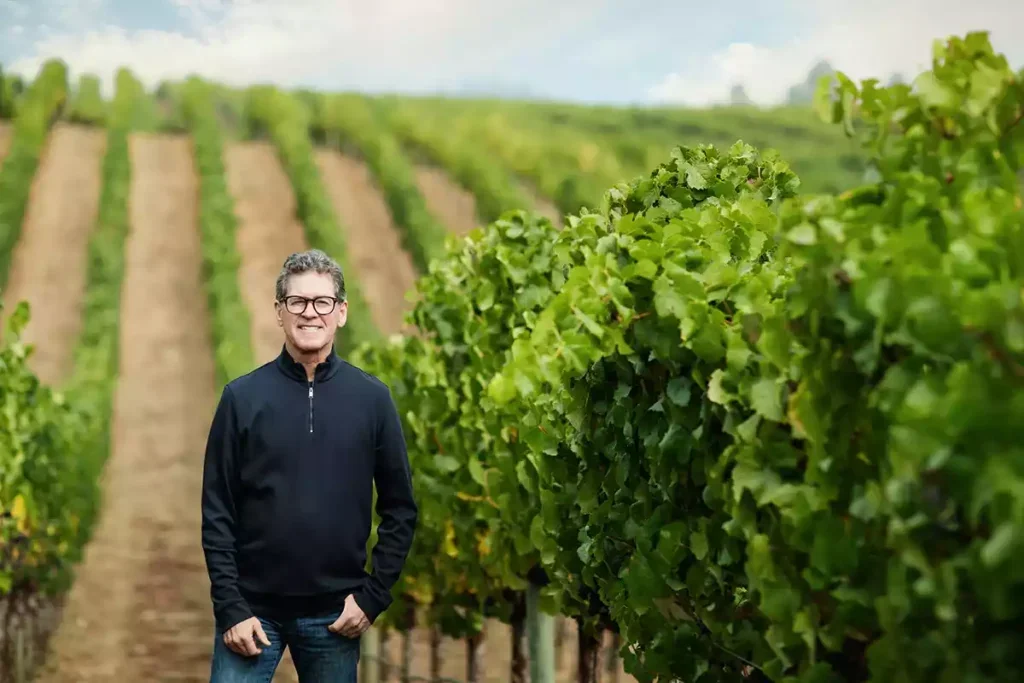
How do we define origins?
Go back in time to the Great Awakening of the northern California wine industry, an age when a group of ambitious, mainly new wine producers in Napa Valley was collectively, if informally, trying to figure out how to shake off the state’s post-Prohibition image of being a backwater producer of jug wines and inexpensive varietals. How could Napa Valley, they wondered, someday be mentioned in the same breath as Bordeaux, Burgundy, and the wine valleys of Germany, then the reigning monarchs of the wine world?
At this time—from around the late 1960s through the 1980s—despite a rather lackluster reputation, Napa Valley still had California’s greatest concentration of quality wineries with the potential to make great wines. But the focus of the world wine trade was still on the whole state of California in its entirety. In addition to Napa, interesting wines were being made in the historic Livermore area east of San Francisco, the Los Carneros region (or simply Carneros, an area stretching between Napa and Sonoma counties), and the Santa Cruz Mountains and the Pinnacles farther down the Pacific Coast.
To a certain extent, the decision to focus more on Napa Valley and less on California was accidentally forced by Steven Spurrier and his famous 1976 Paris tasting, where the judges deemed wines from two Napa Valley producers—a Chardonnay from Chateau Montelena and a Cabernet Sauvignon from Stag’s Leap Wine Cellars—to be superior to highly rated wines from Burgundy and Bordeaux. While the brief Time magazine article that made public these findings did refer to “California wines,” the article identified both wineries as being located in Napa Valley. Just like that, Napa Valley was no longer merely a geographic location; it was now the most important wine region in California—one with world-class potential.
Even then, it was still largely unclear how California wineries in particular, and its wine regions in general, should define themselves. At first, there was considerable interest in vineyard designations. Napa Valley’s Louis M Martini was one of the first to feature a vineyard on its label, the Monte Rosso Cabernet Sauvignon from Sonoma County. The artist and vineyardist Rene di Rosa briefly created a stir by selling at inflated prices grapes from his highly touted Winery Lake Vineyard in Los Carneros to multiple winemakers. Joseph Heitz immortalized Martha’s Vineyard in Napa Valley’s Oakville region, and Robert Mondavi popularized To Kalon vineyard at his new eponymous winery (1966) in the same area.
Additionally, some wineries boasted being part of the valley’s historic and most distinctive designations, such as Rutherford Bench and Los Carneros, as well as in its various mountain designations—Howell Mountain, Spring Mountain, Diamond Mountain, and Mount Veeder. Some employed the multicounty “North Coast” descriptor, and a few tied their fortunes, in the French style, to saying they were in local villages such as Oakville, St Helena, or Calistoga.
The federal government steps in
The US government came to the rescue—or created chaos, depending on your point of view—in 1978 by officially establishing the first AVAs. These were not based on wine quality, and neither did they establish winemaking regulations. Rather, they were simple geographic designations nominated by local growers who presented dossiers with boundaries, terroir claims, and histories to the Bureau of Alcohol, Tobacco & Firearms (BATF)—now the Alcohol and Tobacco Tax and Trade Bureau (TTB)—for official study and approval.
Australian winemaker and author James Halliday gave perhaps the most accurate—if jaded—description of the AVA process in his 1993 Wine Atlas of California: “The reality is, of course, that even if the BATF wanted to venture into the realm of quality, and even more nebulously into the questions of style, it could not do so without retaining a bevy of specialist consultants. So [instead] evidence is trotted up to the BATF which goes through the motions of showing the area is distinct and different; objections are usually dealt with by including the objector (who is typically someone excluded by the application) in the area; and the application is granted.”
In January 1981, Napa Valley was the first California AVA to be approved, second nationally only to little-known, then and now, August, Missouri. Other California regions quickly sought approvals, but it wasn’t until August 1983 that the first Napa Valley sub-appellation was approved: Los Carneros, a shared appellation with Sonoma County.
The second approved sub-appellation was Howell Mountain, on the last day of 1983. The winemakers of Howell Mountain had, and perhaps still have, a reputation for being contrarians, and some of them wanted their wines—and the grapes they sold to other wineries—to be identified as Howell Mountain first and Napa Valley second, if at all. Mike Beatty of Beatty Ranch was one of the Howell Mountain growers and vintners mapping out the Howell Mountain AVA. “We started growing grapes before the appellations, and we sold them our first year to Cakebread,” Beatty remembers. “Then Ridge began putting ‘Howell Mountain’ on their labels,” because Paul Draper liked to prominently identify grape sources.
But Napa Valley Vintners, the region’s trade association formed in 1944, feared that sub-appellations promoting themselves over the mother appellation would hurt the Napa Valley brand—and history has probably proved them correct. “Look what happened to Sonoma County, which didn’t protect its brand,” one Napa producer points out.
At any rate, less than ten years after being granted AVA status, the vintners’ association decided their quickly emerging brand needed the force of legal protection—not just from outsiders trying illegally to claim their wines were from Napa Valley but also from being upstaged by its own nested AVAs. In 1990, it lobbied the California state legislature to pass a law requiring any Napa Valley winery using a sub-appellation on its label to also include “Napa Valley” in the same size or larger type face and just as prominently.
According to this regulation, the state “may suspend or revoke the license of any person who violates this section.” Rex Stults, the NVV’s vice president of industry relations, says they “regularly check all labels for compliance.” It is not unusual, he explains, for proffered labels to be rejected either because of producer ignorance or hubris. A major exception is the two-county Carneros sub-appellation, and many wineries there still use only “Carneros” on front labels.
One could logically ask whether the new regulation had an impact far beyond wine labels, fostering an atmosphere of acquiescence among its wineries, not aggressively developing their individual AVAs, content with simply being Napa Valley?
Regardless, 35 years later, Napa Valley must still be as prominent on the label as the sub-AVA.
The 16 eggs in one nest
In the 40 years since recognition of those two pioneer sub-AVAs—Los Carneros and Howell Mountain—14 additional Napa Valley appellations have received TTB approval. A 17th is awaiting the go-ahead, and an 18th is in the works.
Six of the 16 are primarily mountain terroirs. On the eastern side of the valley, three appellations are in the Vaca range, beginning with Atlas Peak to the southeast, then the upland Chiles Valley, and finally Howell Mountain. Similarly, there are three appellations in the western Mayacamas Mountains bordering Sonoma County: Diamond Mountain to the northwest, then Spring Mountain in the middle, and Mount Veeder to the southwest.
The remaining ten areas are primarily on the valley floor, though some are attached to the lower foothills. Los Carneros borders Mount Veeder at the head of San Pablo Bay and west of where the Napa River flows into that inner estuary of San Francisco Bay. Across the river to the east are Coombsville and Wild Horse Valley, which is shared with Solano County. Going north past Napa city, the appellations except for Stags Leap spread from mountainside to mountainside. First is Oak Knoll, then Yountville, which embraces the smaller Stags Leap in its foothills enclave at the eastern side. Continuing north, there is Oakville, Rutherford, St Helena, and finally Calistoga at the head of the valley.
A 17th nested appellation is awaiting TTB approval: Crystal Springs, a hillside region that fills in an existing void between the Howell Mountain, Calistoga, and St Helena appellations. (If approved, Crystal Springs will officially become “Crystal Springs of Napa Valley,” just as the official name is “Oak Knoll of Napa Valley.” The TTB says the addition “of Napa Valley” is to distinguish the two from other potential Crystal Springs and Oak Knoll appellations elsewhere in the US—though none yet officially exists.) Also in the planning stages is an American Canyon AVA at the southeastern edge of the valley. Pope Valley, while part of Napa County but not geographically part of Napa Valley, has several vineyards that market their wines and grapes as part of the Napa Valley AVA.
Even with all these actual and potential AVAs, Napa County has more than 500,000 acres (200,000ha), and about half of this territory has no nested appellations, instead being either remote mountain areas or urban enclaves.
Not all AVAs are created equal
Of course, not all 16 nested AVAs are equal when it comes to critical recognition and economic value. A survey of most veteran Napa Valley wine producers would generally mark six of these sub-AVAs as producing the best Cabernet Sauvignon and red blends. In France, they would probably be granted grand cru status: Oakville, Stags Leap, Rutherford, and St Helena on the valley floor, and Howell Mountain as the best of the mountain AVAs. Add to these Coombsville, a horseshoe-shaped collapsed volcanic slope across Napa River from Napa city that has emerged from being ignored to valued in recent years as climate change has been beneficial to its ripening cycle.
Kirk Venge, a second-generation Napa vintner of premium red wines both under his own label and those of others, grows or purchases fruit from ten nested AVAs. “Oakville is the uncontested leader of the pack,” he says, “and Rutherford is number two.” The pair share the Rutherford Bench, a legendary expansive, slightly sloping plateau on the valley’s west side that has spawned hundreds of highly rated wines.
Yet perhaps the highest-rated Napa Valley region is one that didn’t have a winery 50 years ago and still has no official designation other than a rather vague geographic one: Pritchard Hill in the eastern Vaca Mountains opposite Yountville. “If it were an AVA, Pritchard Hill would be number one,” Venge claims, and Chris Carpenter, the winemaker in charge of Cardenale, La Jota, and Lokoya wines, agrees on its special status. “There are some great wines being made there,” he says. Among them are Colgin, Brand, Bryant Family, David Arthur, Continuum, Ovid, AXR, and Chappellet. But as sometimes happens in a region, the pioneering winery naturally incorporates the geographic name as part of its branding, as did Chappellet Winery, which began operations in the eastern mountains in 1967 and continues to use Pritchard Hill as a brand name for selected estate wines. But not as an AVA.
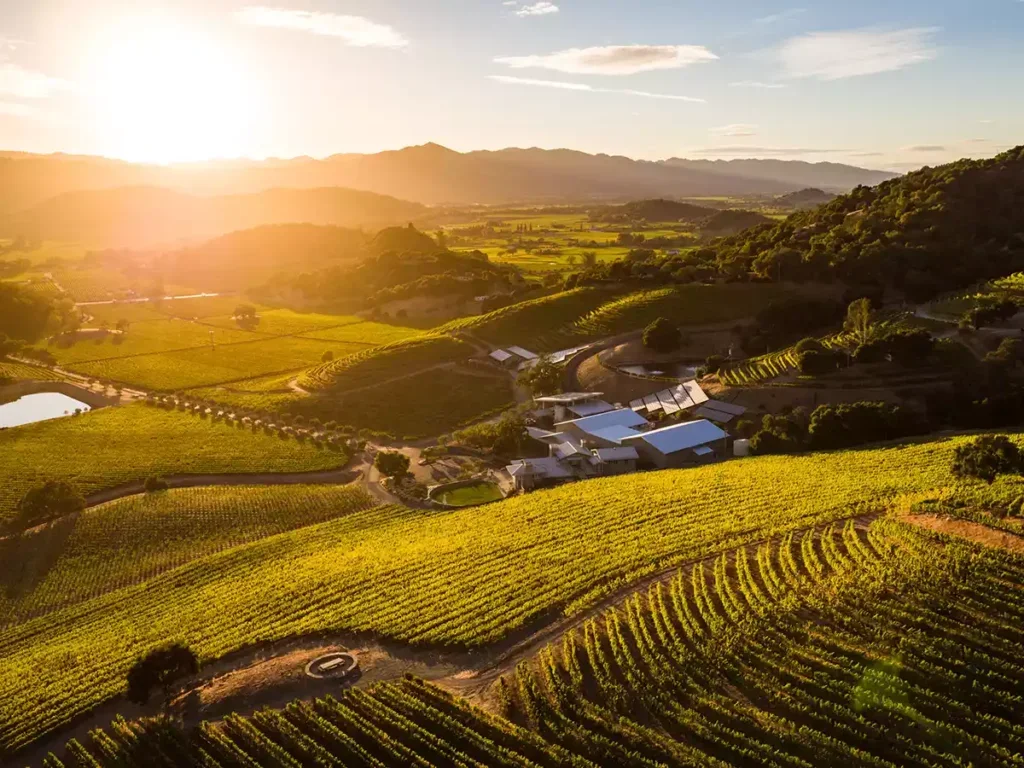
“For our first 25 years, no one else was located on the hill,” says Cyril Chappellet, chairman of the winery’s board. “We trademarked the name in 1970 or ’71 because our attorney said we should trademark Pritchard Hill or someone else might take it from us.” While there have been starts and stops in trying to establish a Pritchard Hill AVA, it seems an impossible undertaking without Chappellet giving up the trademark status, which it understandably does not want to do. Other wineries, however, can note their geographic location as Pritchard Hill.
Paul Hobbs, who began his winemaking career in the late 1970s with the Robert Mondavi crew at Opus One, owns wineries and vineyards in five countries on four continents and has made Napa Valley wines for the past 13 years under his eponymous label. “At some point, I think I’ve made wine from all except one or two of the sub-appellations,” he says.
As Hobbs notes, the two areas with the best historic reputations for Cabernet—Oakville and Rutherford—lie side by side. “The two share more terroir variations than most AVAs because they stretch across the valley floor from mountain to mountain,” he says. Their common sweet spot, however, is the Rutherford Bench on their west side. “There isn’t much terroir difference between the two on this side,” Hobbs says, though Oakville has the vast and highly regarded To Kalon vineyard, which is sort of Napa’s Clos de Vougeot, with its fragmented ownership and being a very expensive source of grapes for Hobbs and several other producers.
“The wines here are very layered, coming in waves and waves across the palate with great persistence,” Hobbs says. “There is little of the black cassis and other flavors toward the black-fruit end of the spectrum that you often get from Cabernet elsewhere. There is good tension, but the wines are not as vibrant as you get in Coombsville.” Hobbs purchases grapes here for his Oakville Cabernet from legendary grower Andy Beckstoffer, but Hobbs owns the Nathan Coombs Vineyard in Coombsville and has received perfect scores for his Cabernet grown there. “Coombsville is cooler, with a harvest that is 10–14 days later than Oakville,” he says. “The fruit is brighter, with flavors of blackberry, huckleberry, and black cassis. There is great mouthfeel, more extract. The wine is a bit more saline, not salty, and very vibrant—with a good backbone and great texture. It will age longer than Oakville.”
Stags Leap, he says, is “elegant and stylish, very supple, good verve and energy, full-bodied; and the flavors are more toward red fruits.” Howell Mountain “is the quintessential mountain fruit—muscular, lots of backbone, tightly wound tannins. It takes longer for Howell Mountain to open up. You need to be patient.”
Does anyone out there care?
But those differences among Napa Valley’s most-valued terroirs and the red wines they produce remain largely untaught and unknown—even among the American wine trade and certainly among foreign buyers on behalf of their customers.
“There’s generally little understanding of, or interest in, the various areas within the Napa Valley, beyond perhaps a broad understanding that it gets cooler the farther south you get, and that a small number of AVAs have got their names about more than others, such as Oakville or the Stags Leap District,” says James Doidge MW, managing director of The Wine Treasury, one of the UK’s primary importers of fine American wines. “For us and our customers, I believe, the quality and possibly reputation of the producer is more important than the AVA.”
Another top-tier British wine merchant says, “In general, there isn’t the knowledge base among our consumers to differentiate or request different Napa AVAs. They are more sold on the general ‘Napa style’ or on [the winery’s] reputation.”
Nor has there been much initiative in the US or abroad to change that. Doug Frost MS MW, an American author, wine producer, and sommelier, says, “When it comes to the MW and the MS [qualifications], the simple truth is that European minds care little for the differences between regions in Napa, and little time is spent teaching people about them. Someday that might change, but for now, those differences are important only to Americans, in my view.”
According to Katherine Hewitt, Liv-ex—the London International Vintners Exchange—“follows what is written on the label” to identify the wine, and the index doesn’t categorize within the Napa Valley AVA. Hugh Johnson and Jancis Robinson MW’s authoritative World Atlas of Wine in its eighth edition does attempt to identify, albeit briefly, primary sub-appellations. Ten are given brief boldface identifications within the Napa Valley text, and individual pages are dedicated to St Helena, Stags Leap, and the Carneros (along with southern Sonoma County). Rutherford and Oakville are fittingly provided a joint page.
Beyond how the sub-AVAs relate to Cabernet quality, producers of other grape varieties in Napa Valley have done little to promote the terroirs that produce the best Sauvignon Blanc or Zinfandel, say. Except for the Carneros, known for its Chardonnays and Pinot Noirs, no other sub-AVA has a reputation for making anything outstanding that is not a Bordeaux red.
An alternate future for Napa Valley
To be fair, most wine growers have seemed very willing to have their wines labeled first and foremost as being from Napa Valley. But over the past few years, there appears to have been a trend among premium and super-premium brands to begin to also tout their sub-appellations.
“We’ve been championing the sub-AVAs for the 30 years our business has been making wine in Napa,” Hobbs says. He tells of meeting with a group of sommeliers who asked why he had dropped the Oakville AVA designation from a Cabernet label. “I told them that [grower] Andy Beckstoffer had asked me to take it off” so as not to upstage his vineyard name on the label. After their discussion, he says, “I went back to Andy and told him that I am going to reinstate the Oakville AVA.”
It’s also true that Napa Valley Vintners promotes its AVAs, if on a controlled basis and always within the context of the 1990 regulations. “The conjunctive labeling law did just what it was supposed to do,” says Teresa Wall, NVV’s senior director of communications. “It helped propel the name ‘Napa Valley’ to the forefront as the highest priority for the region. It has served Napa Valley well, because our region has become a household name in the US and is well recognized around the world. Although I don’t have an exact proportion, I’d say the majority of wineries that can list a nested AVA, do list the AVA. Wine enthusiasts want to learn about our AVAs, and we provide those resources.”
Yet there is a difference between providing basic information and urging consumers to dig beneath the surface—though few wine lovers and merchants are going to explore differences between appellations unless they are given compelling reasons to do so. Little effort is being made to draw attention to those sub-AVAs getting the highest ratings and highest prices for their Cabernets or Chardonnays or Merlots and explaining why that is the case. Or in telling a buyer who wants Cabernets that are earthier or lower in alcohol or tend to have minty accents where to look for them. Of course, this approach is advantageous to producers of lower-priced and less complex wines who are happy to have a Napa Valley label that looks the same as those of top producers.
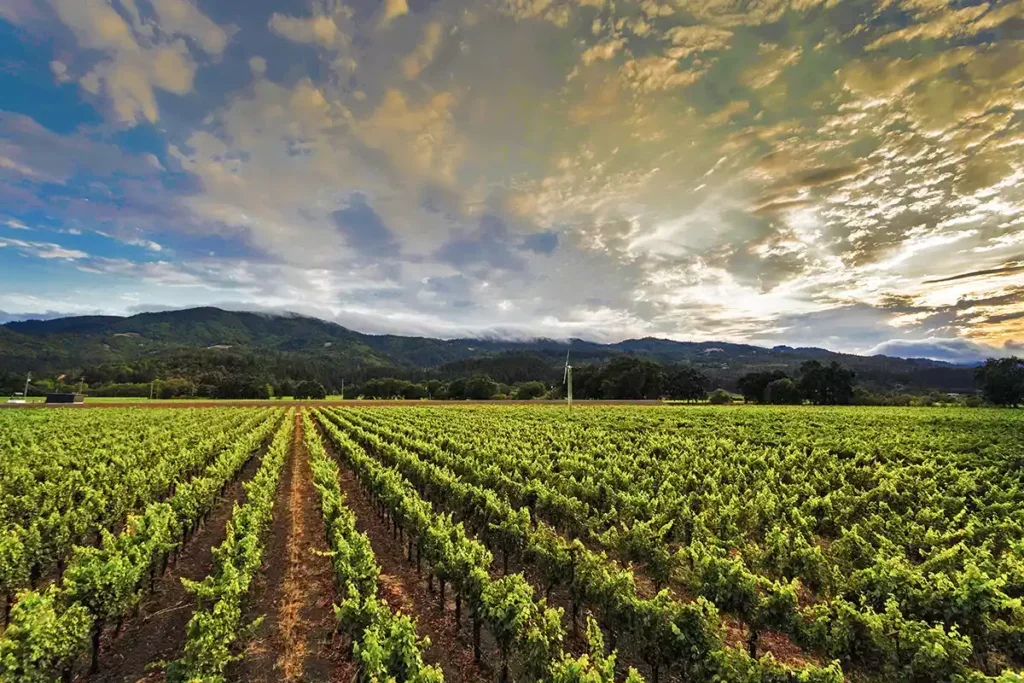
The wineries that would profit most if superior nested AVAs were promoted are those located within those AVAs and that are still striving to elevate their quality, prices, and marketability but need additional recognition. The fact they are in a sub-AVA recognized for its terroir and fine wines would be an incentive for merchants and serious wine drinkers to pay more attention to them. As in Europe, these are the wineries “down the hill from” or “next door to” more famous producers.
This differentiation of sub-AVAs could be accelerated—and be highly educational—if, for example, during the various Napa Valley Vintners wine auctions, individual lots were offered according to their sub-AVAs: Auction all wines from Oakville, from Stags Leap, Spring Mountain, and so on. Potential buyers could concentrate on sub-AVAs they might particularly like and delve into those groups accordingly. Similarly, NVV winery members could be listed on its website according to the AVAs in which their wineries are located. Wine tourists might be incentivized to say, “This trip I want to concentrate on Stags Leap or Spring Mountain.”
In other words, Napa Valley might profit by using the Bordeaux approach best seen during its en primeur or futures week, where, through the years, both trade and press have been able to taste the wines according to their individual regions—those from St-Emilion, Pauilliac, Sauternes, and so forth—in addition to making visits to individual châteaux.
For this to take place, both the vintners’ organization and individual producers would have to recognize a simple truth: While Napa Valley has for years profited greatly from being known as an appellation that makes great Cabernets and Chardonnays and Sauvignon Blancs, it is also becoming known now as an appellation that makes loads of mediocre and even poor Cabs, Chards, and Sauvignons. This is especially true as larger, multiregion producers want to have an “affordable” Napa Valley Cabernet or Chardonnay in their portfolios and will find marginal grapes and less expensive production methods to achieve it. As a result, for many young wine buyers, “Napa Valley” on a label is not by itself a guarantee of quality in the bottle.
Just because a strategy has worked beautifully in the past, it doesn’t mean it will work well in the future, especially in a stumbling wine market. “The success of Napa as a brand is such that it overwhelms the Rutherfords, Stag’s Leaps, and such, and that is a shame,” Frost maintains. “There is richness and uniqueness in those areas, but Napa doesn’t want us to focus on that.”
Alternate “what if?” histories have been very popular in recent years as an hypothesis for films and novels. Now, looking back to those genesis years during the 1960s and ’70s, one wonders what might have happened if the state of California had legislated back then that “California” had to be as prominent on wine labels as its sub-appellations—California first, then Paso Robles, Anderson Valley, Santa Barbara, Napa Valley… Would the state’s wine business have been as well respected and prosperous—and ready for future growth—if Napa Valley itself had been a nested AVA to California?
Will a future, yet-to-be-determined actual wine history tell how these individual, nested “Napa Valleys” eventually gained their own distinctive reputations within generic Napa Valley—and did so to everyone’s advantage?

